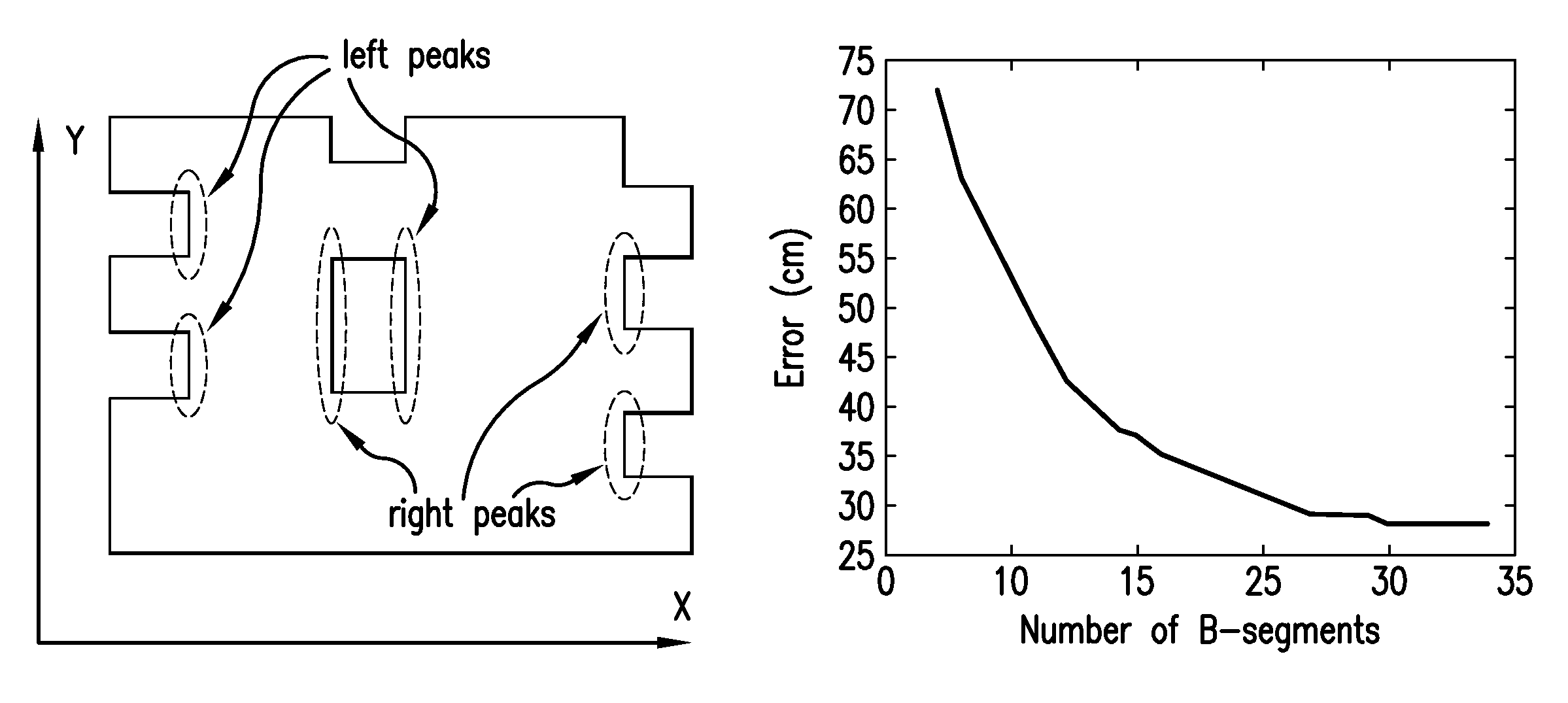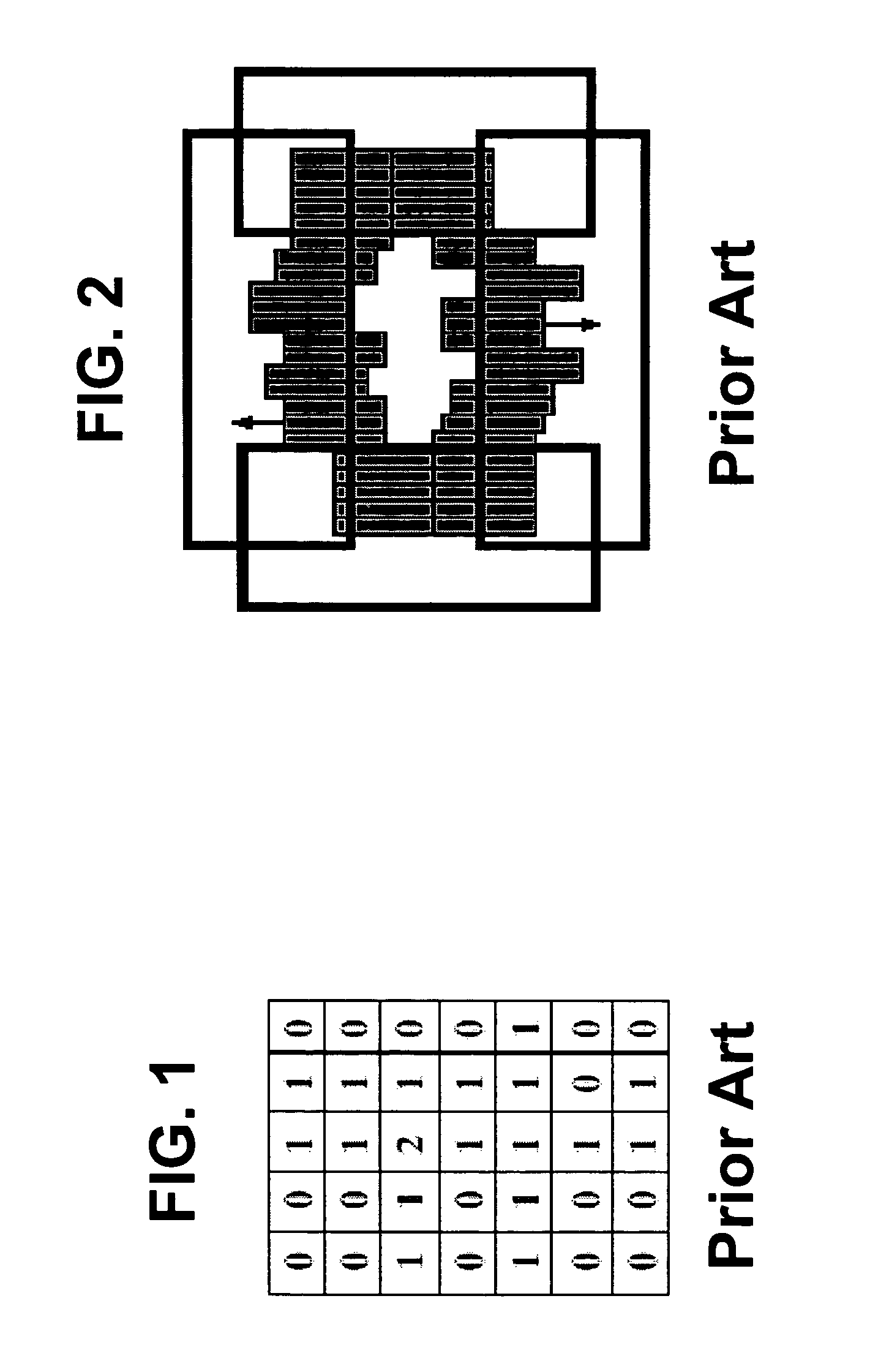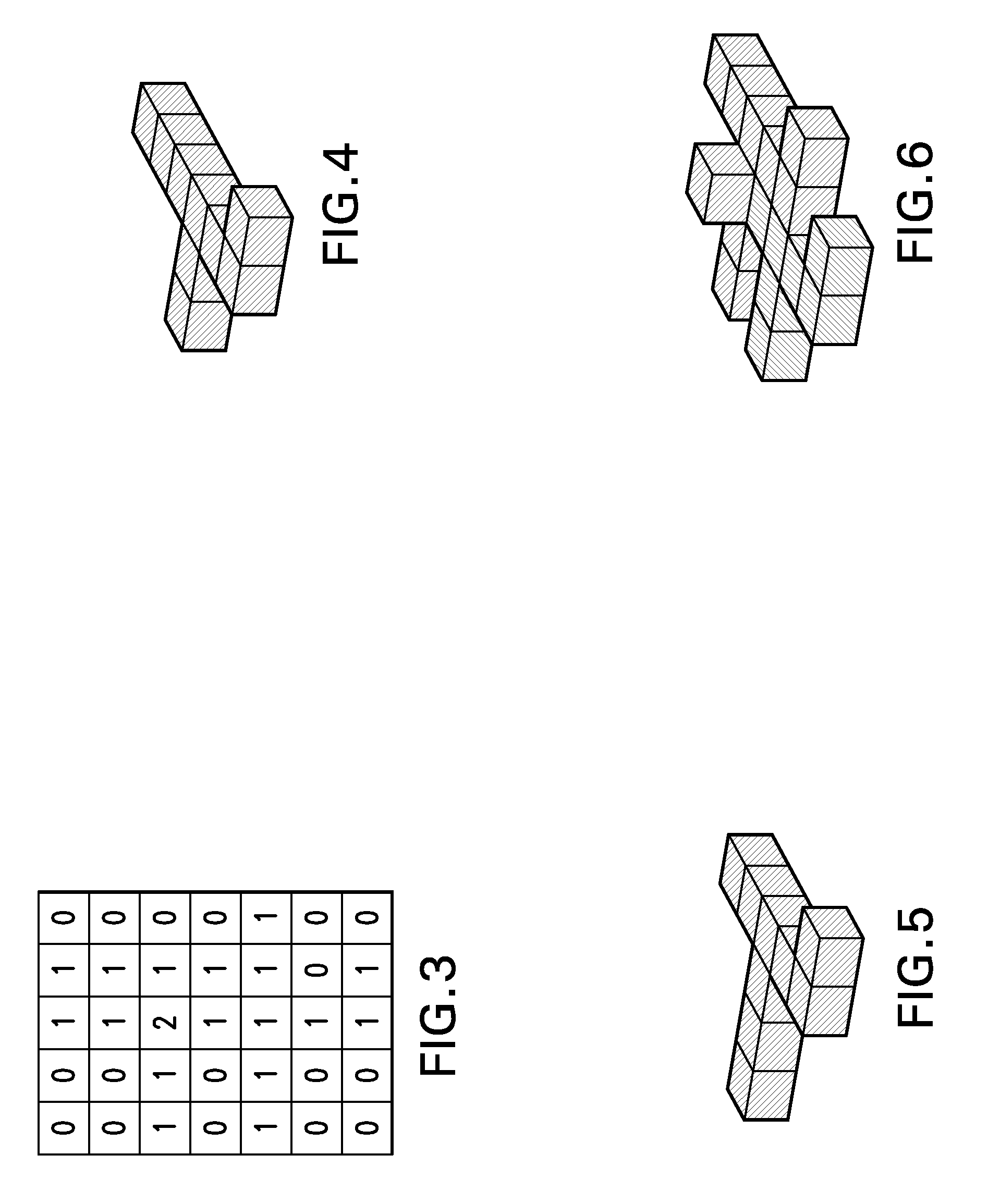Error control in algorithmic approach to step-and-shoot intensity modulated radiation therapy
a radiation therapy and error control technology, applied in radiation therapy, radiation therapy, x-ray/gamma-ray/particle irradiation therapy, etc., can solve problems such as machine delivery errors
- Summary
- Abstract
- Description
- Claims
- Application Information
AI Technical Summary
Benefits of technology
Problems solved by technology
Method used
Image
Examples
example 1
[0355]To examine the behavior and performance of several 3-D SLS algorithms of the present invention, the algorithms were implemented them using C on the Linux systems and conducted extensive experimental studies using real medical data obtained from the Department of Radiation Oncology, University of Maryland School of Medicine.
[0356]For example, a basic 3-D SLS algorithm with error control was implemented for the Elekta™ model, and experimented with the program using about 120 clinical IMs. Note that most of the IMs used in current cancer patient treatments on the Elekta™ system have a maximum height around 5, and on such IMs, the basic 3-D SLS algorithm usually produces solutions that are very close to the optimal ones for the general 3-D SLS problem. Moreover, the 3-D SLS algorithm, according to one embodiment of the present invention, runs reasonably fast. Table 1 of FIG. 33 shows the output results of a basic 3-D SLS program according to one embodiment of the present invention...
example 2
[0364]An SLSWNE algorithm of the present invention was implemented using C on Linux systems, and experimented with it on about 80 IM sets obtained from the Dept. of Radiation Oncology of the Univ. of Maryland Medical School. Comparisons were conducted with CORVUS™ 5.0, one of the most popular commercial leaf sequencing systems, a well-known algorithm by Xia and Verhey, described in Xia et al., “MLC Leaf Sequencing Algorithm for Intensity Modulated Beams with Multiple Static Segments. Med. Phys., 25:1424{1434, 1998, the entire contents and disclosure of which is hereby incorporated by reference, and the previous SLS algorithms described in the “Chen et al. I” and “Chen et al. III” papers.
[0365]Specifically, the following aspects of these algorithms were examined: (1) the number of MLC-apertures, (2) the execution time, and (3) the amount of delivery error. Experimental results showed that the SLSWNE algorithm / software, in accordance with one embodiment of the present invention, compa...
PUM
 Login to View More
Login to View More Abstract
Description
Claims
Application Information
 Login to View More
Login to View More - R&D
- Intellectual Property
- Life Sciences
- Materials
- Tech Scout
- Unparalleled Data Quality
- Higher Quality Content
- 60% Fewer Hallucinations
Browse by: Latest US Patents, China's latest patents, Technical Efficacy Thesaurus, Application Domain, Technology Topic, Popular Technical Reports.
© 2025 PatSnap. All rights reserved.Legal|Privacy policy|Modern Slavery Act Transparency Statement|Sitemap|About US| Contact US: help@patsnap.com



